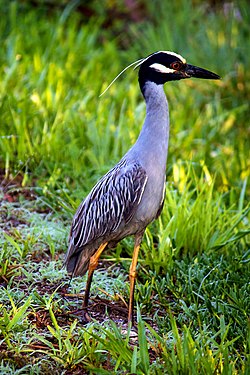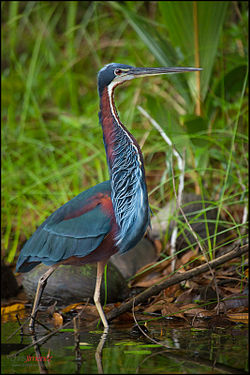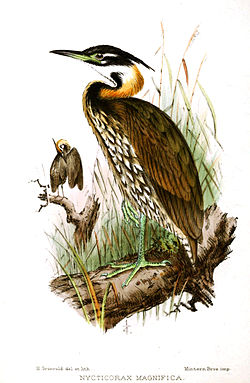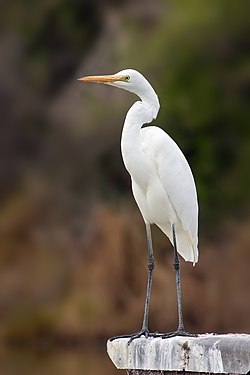| Image | Genus | Living species |
|---|
 | Nycticorax T. Forster, 1817 – typical night herons | |
 | Nyctanassa Stejneger, 1887 – American night herons | |
 | Gorsachius Bonaparte, 1855 – Asian and African night herons | |
 | Butorides Blyth, 1852 – green-backed herons | |
 | Agamia Reichenbach, 1853 – Agami heron | |
 | Pilherodius Reichenbach, 1853 – capped heron | |
 | Ardeola F. Boie, 1822 – pond herons | |
 | Bubulcus Bonaparte, 1855 – cattle egrets | |
 | Ardea – typical herons | - Great blue heron, Ardea herodias
- Grey heron, Ardea cinerea
- Goliath heron, Ardea goliath
- Cocoi heron, Ardea cocoi
- White-necked heron or Pacific heron, Ardea pacifica
- Black-headed heron, Ardea melanocephala
- Humblot's heron, Ardea humbloti
- White-bellied heron, Ardea insignis
- Great-billed heron, Ardea sumatrana
- Purple heron, Ardea purpurea
- Great egret or great white egret, Ardea alba
- Intermediate egret, Ardea intermedia
|
 | Syrigma Ridgway, 1878 – Whistling heron | |
 | CalherodiusWagler, 1827 - White-backed night heron | |
 | OroanassaOgilvie-Grant, 1899 - White-eared night heron | |
 | Egretta T. Forster, 1817 – typical egrets | - Pied heron, Egretta picata
- White-faced heron, Egretta novaehollandiae
- Reddish egret, Egretta rufescens
- Black heron, Egretta ardesiaca
- Slaty egret, Egretta vinaceigula
- Tricolored heron, Egretta tricolor – also known as Louisiana heron
- Little blue heron, Egretta caerulea
- Snowy egret, Egretta thula
- Little egret, Egretta garzetta
- Western reef heron, Egretta gularis
- Dimorphic egret, Egretta dimorpha
- Pacific reef heron, Egretta sacra – also known as Pacific reef egret or eastern reef heron
- Chinese egret, Egretta eulophotes
- †Egretta subfluvia, (Late Miocene or Early Pliocene)
|
|













